Linked by hills and rivers, Lancang-Mekong countries share a tapestry of cultures
From October 1 to 3, 2024, the 12th Culture and Art Festival of Countries in the Lancang-Mekong River Basin took place in Xishuangbanna Dai Autonomous Prefecture. Art troupes from the six Lancang-Mekong countries came together to promote friendship through dance, celebrating the rich historical civilizations and deep connections that resonate in their melodies.

China: Usha and Phra Ram exemplifies the spirit of Yunnan
As night descended, a clear and melodious Zhangha tune filled the air. Gao Chenghua, a post-2000s Zhangha opera performer, collaborated with his partner to narrate the romantic tale of Usha and Phra Ram from the Chinese Dai mythological epic. Their performance depicted the couple’s relationship solidifying in the forest, immersing the audience in the ancient Dai world.
“Zhangha” refers to Dai singers and is also the name of a popular performing art form among the Dai people. The Dai people’s Zhangha opera is an ethnic theatrical genre rooted in Zhangha storytelling, incorporating elements such as long poems, dances, music, and language. Gao shared that “Usha and Phra Ram” not only weaves together a rich tapestry of ancient Dai myths, legends, and poetry but also offers a vivid portrayal of life in ancient Dai society. The actors in the play utilize a distinct separation of singing and acting, blending folk music while preserving traditional Zhangha opera singing techniques and exploring innovative formats for their presentation.
“The story of Usha and Phra Ram has a unique Yunnan flavor,” Gao remarked. “It emphasizes the Dai people’s core values of cherishing peace, seeking happiness, and embracing nature, while also showcasing the rich cultural diversity among Yunnan’s various ethnic groups.” As the singing filled the air, the audience could almost visualize the lush mountains, diverse customs, and deep history of Yunnan.
“In my interactions with troupes from other countries, I have gained a profound appreciation for the diversity and commonalities of cultures,” Gao said. “I hope to use Zhangha opera as a bridge to share the cultural stories of Yunnan’s ethnic groups with the world.”
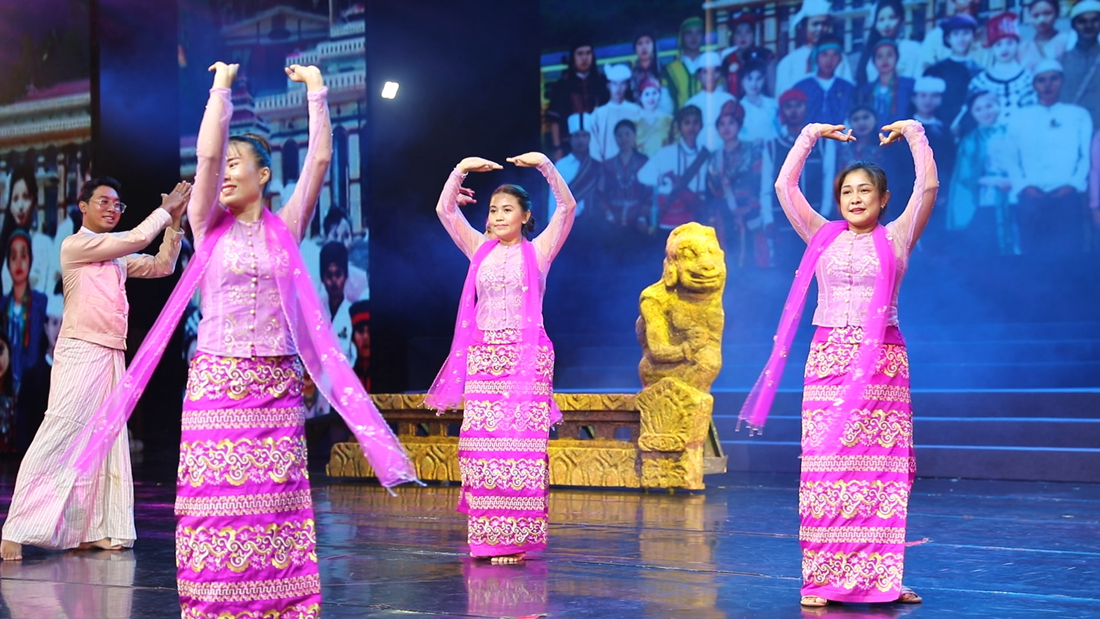
Myanmar: Changes reflected in clothing
With graceful spins and lively leaps, fingers delicately trace the air as if plucking the strings of time. On stage, the dancers from Myanmar seem to emerge from ancient murals, each movement narrating the historical stories of various eras in Myanmar.
“We are showcasing dances that depict the stories of three distinct eras in Myanmar. Among these, the Bagan dance is the most iconic traditional dance, characterized by movements and costumes inspired by the murals in the Bagan pagodas,” introduced dancer Ze Mating (transliteration). She noted that the accessories used in the Bagan dance are as light as the wings of the mythical birds illustrated in the murals. “These garments enable us to better embody our characters and convey the narrative of Myanmar’s historical and cultural transformations.”
Ze Mating, who has loved dancing since childhood, is no stranger to China. “During my college years, I had the opportunity to participate in a four-day cultural exchange in Urumqi, Xinjiang. The performances during that time deepened my understanding of Chinese culture.” Ze Mating recognizes the significance of each performance and hopes to convey the diversity and richness of Myanmar’s culture through her dance.
As the music starts, Ze Mating’s movements blossom like a flower, inviting the audience to appreciate the dance while experiencing the Myanmar people’s pursuit of beauty and their passion for traditional culture. “Events like these allow us to introduce Myanmar’s cultural arts to other countries, while also drawing inspiration from the traditional arts of other nations, opening up new possibilities for our artistic innovation.”
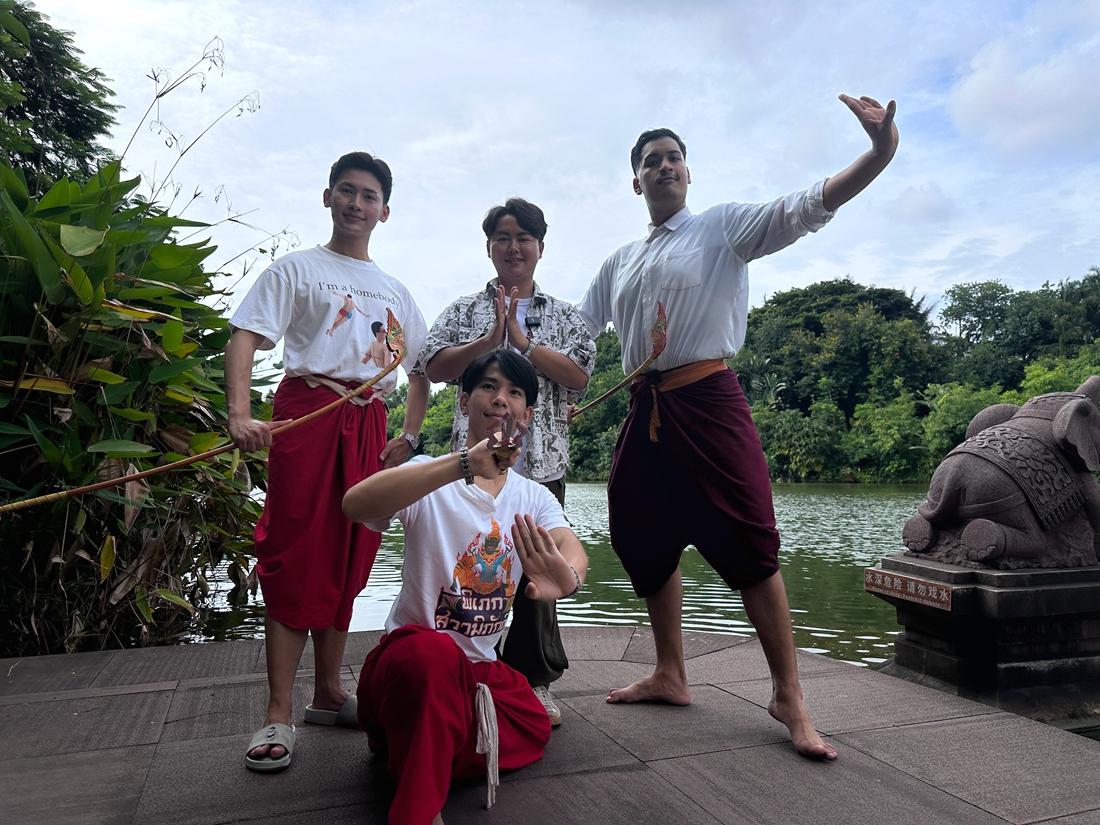
Thailand: A flawless performance showcasing dedication and effort
Rama and the Demon King engage in a fierce battle with bows and arrows, while the Monkey King leaps and flips gracefully, landing lightly. The Khon Drama, The Story of Ramakien, performed by Thai actors, received enthusiastic applause from international audiences even during its rehearsal.
Khon is regarded as a national treasure of Thai performing arts and has been included in UNESCO’s Representative List of the Intangible Cultural Heritage of Humanity. A defining feature of Khon is its ability to convey meaning through dance, enhanced by the elaborate masks worn by the actors, which are distinctive to this art form.
Professional Khon performers typically begin rigorous training at a young age. The three lead actors participating in the Culture and Art Festival of Countries in the Lancang-Mekong River Basin each have nearly 15 to 20 years of experience, having been involved in Khon since they were six years old. They share that, as children, they were captivated by the spectacular performances they watched with their families, even if they did not fully understand the meanings of the stories, which inspired them to pursue their craft.
“The Monkey King is lively and possesses many dynamic movements, which is what attracts me the most,” says actor Tapisi Parkpiang (transliteration). To convey the unique characteristics of each role, the actors strive to execute every movement flawlessly, sustaining their energy from the opening to the closing of the performance.
“I’ve been learning Khon for nearly 20 years, and the more I study it, the more I enjoy it,” says actor Phuwapong Phinoyalapkasane (transliteration). With a history spanning hundreds of years, Khon presents the challenge of grasping the cultural concepts behind the roles and stories, integrating this understanding into the performance. “The most exhilarating moment for us is hearing the applause from the audience at the end of a show; we’ve also made many friends along our learning journey.”
Phuwapong notes that traditional arts like Khon once had high barriers to entry and limited distribution channels, which made it challenging for young people to learn about them. However, with the rise of the internet, Khon has begun to gain popularity on social media through short videos, attracting a new audience of young enthusiasts. To help preserve traditional arts and culture, some elementary schools in Thailand have started offering Khon courses. Currently, Phuwapong teaches at an art school, with the hope of nurturing more talented Khon performers in the future.
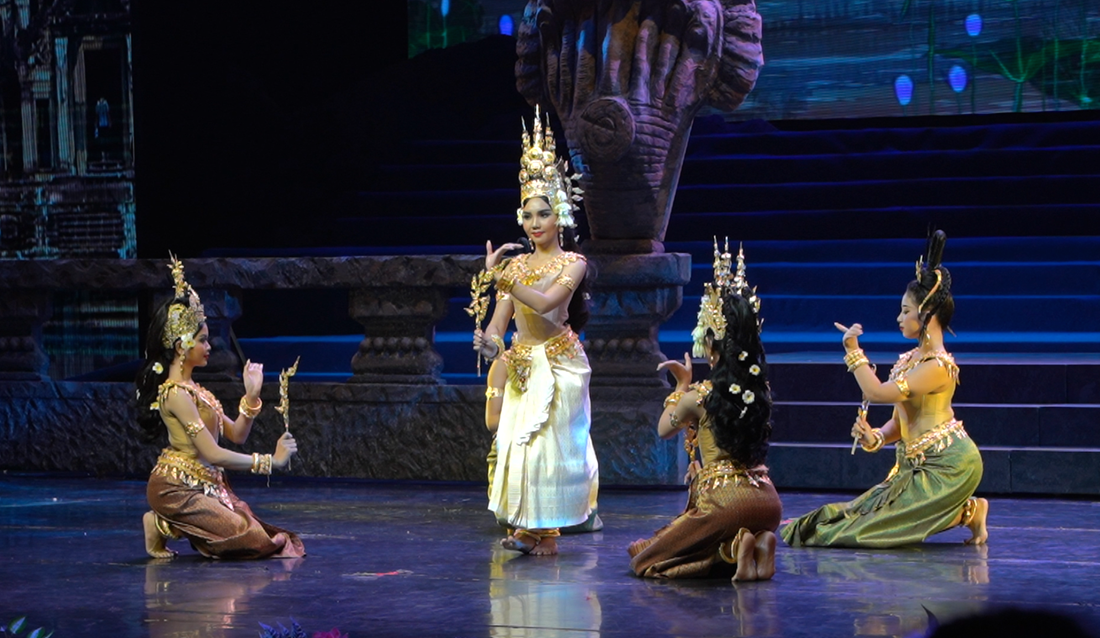
Cambodia: Flowers blossoming at the dancers’ fingertips
Planting, sprouting, growing, blooming, leafing out, bearing fruit, withering, and being reborn—these stages are beautifully reflected in the performances of the dancers chosen by Cambodia’s Ministry of Culture and Fine Arts, who present a celestial dance for the audience. Their movements are graceful and captivating, with elongated fingers symbolizing the life journey of a seed that thrives endlessly, representing the Cambodian people's deep love for life and appreciation for nature.
Twenty-four-year-old dancer Teng Pisey (transliteration) began her dance journey at the age of nine. “When I was little, my maternal grandmother saw dancers on TV performing beautifully and decided to send me for professional training,” she recalled. The celestial dance has a rich history and is highly emblematic of Cambodia’s traditional dance, with the performers on stage radiating like fairies.
However, the journey of learning dance has not been without its challenges. The exhaustion and hardships of training have led Teng Pisey to contemplate giving up several times. “But my family has always reminded me that to achieve something, you must put in hard work,” she said. Using hand gestures from celestial dance as an example, she explained that each gesture conveys a different meaning and demands a high level of flexibility, fluidity, and grace from the performers. It is only through long-term practice that one can capture the delicate charm at their fingertips. Teng Pisey raised her left palm with all the fingers bending back, gently assisted by her right hand, allowing the fingertips of her left hand to touch her wrist effortlessly. “What once seemed difficult to me now feels easy,” she smiled, noting that time and practice have deepened her appreciation for the beauty of celestial dance.
In 2019, Teng Pisey came to Xishuangbanna to participate in the Culture and Art Festival of Countries in the Lancang-Mekong River Basin for the first time, and this year marks her second participation. As her dance skills have matured over the years, she has performed multiple times in China, as well as in Southeast Asia and Europe. Such experiences have allowed her to witness diverse cultures, and every time she takes the stage, she hopes to convey the deep historical and cultural essence of Cambodia through her dance. “This time, the dancers performing in China are very young, and we hope to showcase the young dancers' understanding of Cambodian culture,” she said.
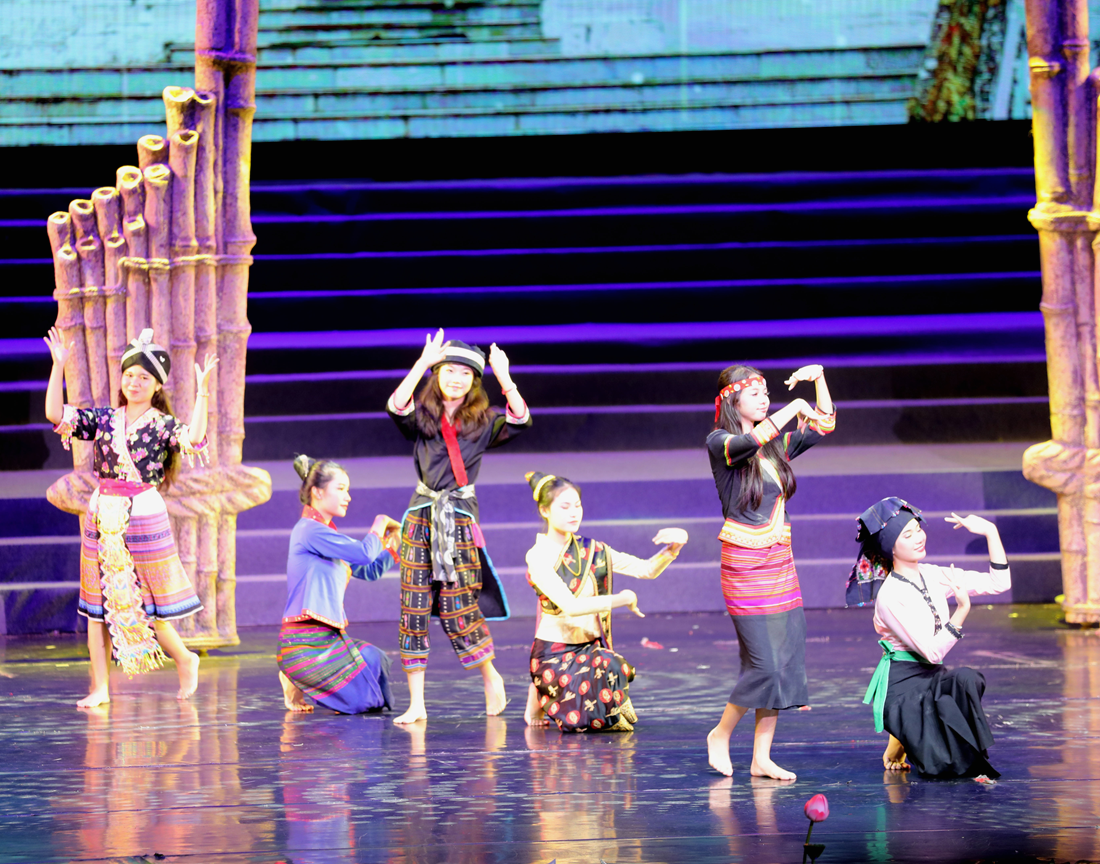
Laos: Melodies of the khene enchant the audience
In October, amidst the beautiful autumn season, Kidisa Siradikoon (transliteration) from Laos’ Luang Prabang Arts Troupe, took the stage at the Culture and Art Festival of Countries in the Lancang-Mekong River Basin, accompanied by his longtime musical companion, the traditional Lao khene.
The khene is a traditional wind instrument from Laos made of bamboo. The sound is produced by blowing or sucking air, which causes the reeds and air columns within the pipes to vibrate. Each pipe features a finger hole that the player presses to produce the desired note. “I started learning the khene in high school, and it has since become an integral part of my life,” explained Kidisa Siradikoon. The khene plays a vital role in celebrations, weddings, and everyday gatherings in Laos.
According to Sulithong Vithanaphong (transliteration), head of the Luang Prabang Arts Troupe, the khene is not just an instrument; it is a symbol of cultural identity. “In 2017, Lao khene music was inscribed on UNESCO’s Representative List of the Intangible Cultural Heritage of Humanity. The production process of the khene reflects the nature, agriculture, and lifestyle of the Lao people.” Sulithong mentioned that an increasing number of young people are learning to play the khene, with many primary and secondary schools now offering khene courses. “Through continuous development and improvement, khene music has become beloved by the people of Laos, and many popular songs now incorporate elements of the khene.”
To provide the audience with deeper insights into Lao culture, the Luang Prabang Arts Troupe also showcased traditional ethnic dances at the Culture and Arts Festival, aiming to highlight the lifestyles of various ethnic groups in Laos. “With the opening of the China-Laos Railway, traveling to Laos has become more convenient, and we hope to attract tourists from around the world to visit Laos and experience its rich and vibrant culture,” Sulithong said.
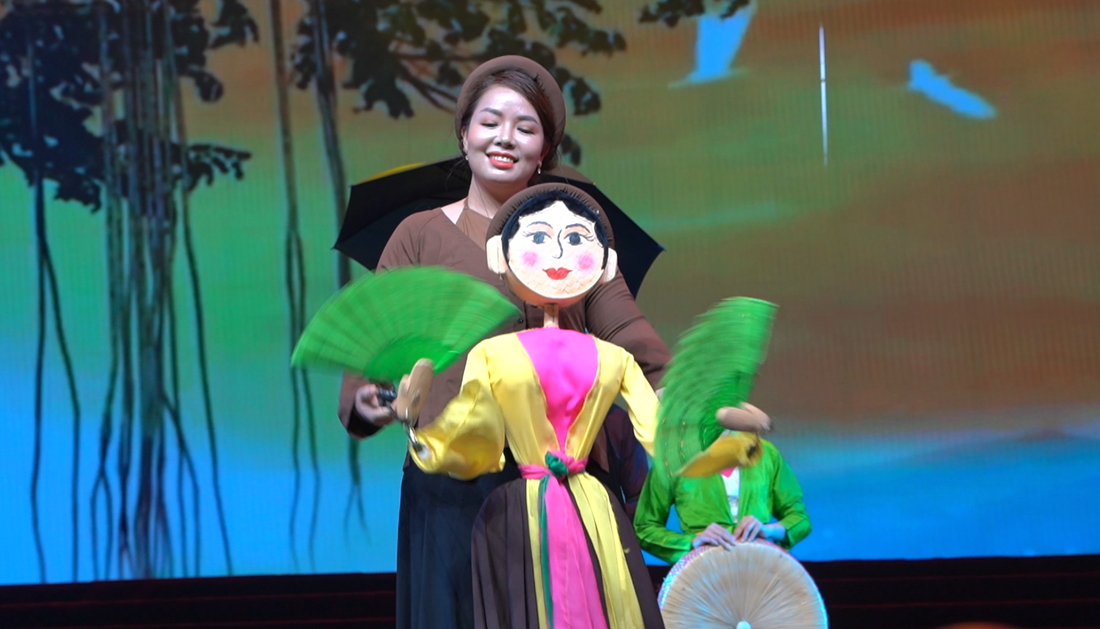
Vietnam: Quan Ho Bac Ninh folk songs exuding emotions
Nguyen Le Ngoc (transliteration), the 65-year-old chairwoman of the Le Ngoc Theater in Vietnam, has dedicated nearly 50 years to the arts. This time, she brought seven performers to the 12th Culture and Art Festival of Countries in the Lancang-Mekong River Basin to showcase Vietnam’s Quan Ho Bac Ninh folk songs.
Quan Ho Bac Ninh folk songs are a distinctive art form of Vietnamese folk music and have been inscribed on UNESCO’s Representative List of the Intangible Cultural Heritage of Humanity. Nguyen Le Ngoc explained that the melodies of Quan Ho Bac Ninh folk songs are beautiful and rich in emotion, reflecting the unique life and interests of the Vietnamese people. “We want to share Quan Ho Bac Ninh folk songs with the world so that everyone can appreciate their beauty,” she added. Many audience members enjoy Vietnamese puppetry, so they incorporated a puppet show into the performance. Under the performers’ direction, the puppets danced to the music, creating an impressive scene of a Vietnamese girl preparing to attend a temple fair in search of her beloved.
Nguyen Le Ngoc has long been dedicated to the preservation of ethnic culture and cultural heritage. She shared that the Le Ngoc Theater was established in 2013, and over the past decade, its range of performances has continually expanded, with the troupe visiting countries such as France, Italy, Monaco, Japan, South Korea, and Laos. They have also engaged in significant artistic exchanges with China, having visited Nanning more than ten times, and this marks their second visit to Xishuangbanna. “It is a great honor to present Vietnamese artists and programs on the world stage. Through exchanges with artists from other countries, I find that the characteristics of Vietnamese culture are very prominent, and we have learned much from the unique cultures of other nations,” Nguyen said.
“The preservation of traditional culture is a challenge that every country faces. Those in the arts must be proactive in promoting their national cultures so that young people can engage with, understand, and appreciate traditional arts. Educational institutions and relevant organizations need to make greater efforts starting at the school level,” Nguyen said. She noted that the Lancang-Mekong countries are interconnected, with various points of cultural exchange and integration among them. During her numerous visits to China, she observed that the country has made significant progress in the protection of cultural heritage and expressed her hope for strengthened communication between Vietnam and China in this area.
Text by Yunnan Daily
Translated by YNTA